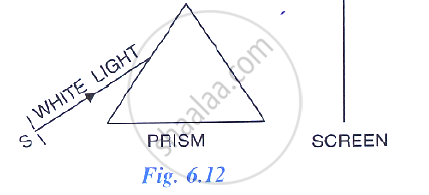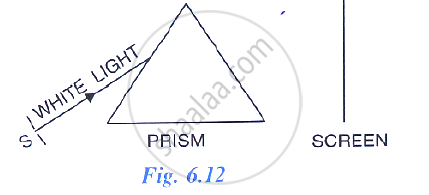Advertisements
Advertisements
प्रश्न
A prism causes dispersion of white light while a rectangular glass block does not. Explain.
उत्तर
In a prism, the refraction of light takes place at the two slant surfaces. The dispersion of white light occurs at the first surface of the prism where its constituent colours have deviated through different angles. At the second surface, these split colours suffer the only refraction and they get further separated. But in a rectangular glass block, the refraction of light takes place at the two parallel surfaces. At the first surface, although the white light splits into its constituent colours on refraction, these split colours on suffering refraction at the second surface emerge out in form of a parallel beam, which gives an impression of white light.
APPEARS IN
संबंधित प्रश्न
Which colour of white light travels fastest in glass?
In following diagram shows a thin beam of white light from a source S striking on one face of a prism.

A slit is placed in between the prism and the screen to pass only the light of green colour. What will you then observe on the screen?
In following diagram shows a thin beam of white light from a source S striking on one face of a prism.

What conclusion do you draw from the observation in part (b) above?
Light of different colours is deviated through different angles, by a prism. Explain the reason.
Explain, why quartz prism is required for obtaining the spectrum of ultra-violet light?
Draw a neat diagram to show the arrangement you would use to project a pure spectrum of white light on a screen.
Comment on the statement: ‘When any ray of white light is incident on a glass prism, it simply disperses it into its seven constituent colours.
Which colour of white light travels slowest, in glass?
Write the approximate wavelength for red light.
The wavelengths for the light of red and blue colours are nearly 7·8 × 10-7 m and 4·8 × 10-7 m respectively.
Which colour has greater speed in glass?
